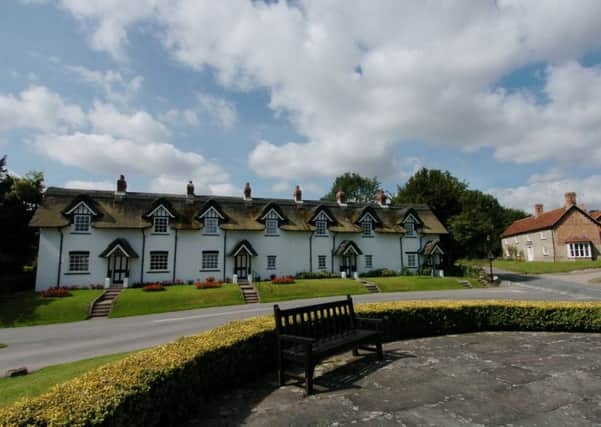Walks: Warter wonderful day out at scenic village


Warter is one of the most picturesque villages in the East Riding. It’s an estate village where most of the houses and land have long belonged to a single landowner. In 1086 the manor was owned by the king, and it was the centre of a large estate. A long history has followed, and I suggest you refer to this map and park in the village car park before exploring further.
1) Starting at St James’ Church (the Yorkshire Wolds Heritage Centre), built between 1862-63 by Lord Muncaster, you would do well to refer to a leaflet in the church. With its prominent steeple, it makes a striking contribution to the landscape. Sadly it was declared redundant in 1990 and later threatened with demolition. It was saved by the Yorkshire Wolds Buildings Preservation Trust which now owns the church and most of the churchyard. This is being conserved as a wildlife habitat as an example of semi-natural chalk grassland that is amongst the richest of habitats for species diversity. Again, a leaflet will guide you not only around the churchyard, but relates its history, too.
Advertisement
Hide AdAdvertisement
Hide AdInside the church itself, are four of the finest early 20th century stained glass windows in England. They were designed by Robert Anning Bell. Two are in the church itself, and two semi-circular ones in the mausoleum.
The site of the priory, in the churchyard and surrounding field is a scheduled monument. Priory stone can be seen in the walk of farmhouses, cottages and outhouses. Look for them both in and around the village, as you walk on.
2) At Cross Hill stands the war memorial of 1921.
3) Ludhill House, an 18th century farmhouse has been recently enlarged and altered.
4) Thatched cottages were formerly the pantiled Barrack Row altered and thatched c1930.
Advertisement
Hide AdAdvertisement
Hide Ad5) Manor House Farm was built in 1732 using stone from the demolished medieval priory.
6) The post office was built in the 1880s to designs by Smith and Brodrick. It replaced the inn, ‘The Creeping Kate’, closed by Charles Wilson.
7) The community centre is the former village school built by Lord Muncaster in 1868.
8) This pair of cottages built in 1871, were probably to designs of JB and W Atkinson of York.
Advertisement
Hide AdAdvertisement
Hide Ad9) Skygate Cottages form a terrace of four built in the 1870s.
10) The former Wesleyan Methodist Chapel was built in 1808 and enlarge in 1878. The land was given by ‘Praying Johnny’ Oxtoby.
11) Here you find a terrace of three estate cottages built in 1874 probably by Atkinsons of York.
12) Warter CE Primary School was built in 1972.
13) Here are typical late 19th century estate cottages which are set back in large gardens.
Advertisement
Hide AdAdvertisement
Hide Ad14) Built as a pair of cottages in 1858, you’ll see a date stone and initial ‘M’ for Muncaster in the gable.
15) Now you’ve reached Bucksey, the village pond.
16) Bucksey House nearby, was a former smithy.
17) Here are earthworks of the shrunken village. The Penningtons reduced the village by a third in the early 18th century.
Refreshments: Warter village shop, which also sells local products. Open: Mon, Tues, Thurs, Fri 7.45am-5pm; Wed 7.45am-1pm; Sat 7.45am-12pm; Sunday closed.